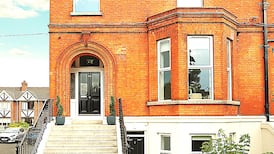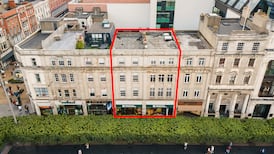Meteor, the developer of the State's third mobile phone system, has lodged a series of planning applications with local authorities for its telephone masts.
The applications are likely to reopen the debate on whether the Government should now require mobile phone companies to co-locate their antennae on the same masts.
So far, the telephone companies have resisted co-location, arguing that it is unfair for one firm which has gone to the trouble of developing its network to be required to share.
Many concerned individuals and community groups throughout the State have raised questions about the safety of exposure to the mobile telephone masts while others have expressed concern about the visual intrusion on the landscape caused by a multiplicity of such telephone masts.
Commenting on Meteor's recent announcement that it intended to site a mobile phone mast at Killiney Golf Club, Councillor Eoin Costello, a member of Dun Laoghaire/Rathdown County Council, said the company should now engage in widespread public consultation.
Councillor Costello said he hoped that Meteor would engage in full and detailed discussions with the residents of the areas where they intended to locate masts. He said that in many cases there was understandable concern and upset over the masts and he pointed to a case in Blackrock, Co Dublin, in which planning permission was granted for a mast in the vicinity of a national school.
Councillor Costello said the issue for many people was that the use of a mobile phone was a personal decision, while exposure to a mobile phone mast was not. "It is the involuntary nature of exposure to mobile phone masts, which is the cause of people's concern."
However he added that "it has to be accepted that in Ireland signals from television and radio stations are quite often much higher than those from mobile phone masts".
A report from the Oireachtas Joint Committee on Public Enterprise and Transport found that the general body of scientific evidence has not established a link between non-ionising radiation, which is emitted by mobile phones and masts, and damage to human health.
The report of the joint committee was of the opinion that a significant element of the anti-mast movement had arisen due to a lack of consultation with local residents, particularly in relation to exempted mast development. Councillor Costello said obligations to have sufficient masts in place at certain times to meet licence conditions were not acceptable reasons for this lack of consultation.
The Director of Telecommunication Regulation is currently undertaking an audit of the procedures of operators to ensure that safety levels of non-ionising radiation emissions are not exceeded.
Councillor Costello said he expected Meteor to organise a public meeting so that all affected parties could be informed.
A planning application for a mobile phone mast at the ESB Station on Newtownpark Avenue, Blackrock, earlier this year led to heated exchanges about the role of councillors in the planning process. The exchanges arose after a planning application was received in late December last year for the erection of a mobile phone mast at Newtownpark Avenue.
The application was listed to be discussed at a planning meeting of the councillors in February. However, according to councillors, two days before the planning meeting officials went ahead and gave permission for the erection of the mast.










